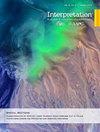利用多波束测深和反向散射改进海底地球化学调查:第2部分,渗漏探测的最佳实践和案例研究,重点是印度尼西亚
IF 1.1
4区 地球科学
Q3 GEOCHEMISTRY & GEOPHYSICS
Interpretation-A Journal of Subsurface Characterization
Pub Date : 2022-12-12
DOI:10.1190/int-2022-0067.1
引用次数: 0
摘要
海底油气渗漏的成功采样可以提供有关烃源岩、运移、成熟和充注的信息,从而影响勘探决策。虽然3D地震数据可以解释潜在的海底渗漏,但可以以更低的成本和更短的时间在更大的区域内获取多波束,利用测深、后向散射和水柱图像来解释潜在的海底渗漏目标。在勘探项目的早期使用基于多波束的勘探可以提供一个地区的石油系统信息,也可以提供海底没有石油系统证据的地区的信息。在本文中,我们介绍了区块特定的渗漏搜索和区域多波束调查的案例研究。对于区域勘探,多波束可以结合二维地震、USBL(超短基线)定位活塞取心、热流、高分辨率海底剖面、海洋重力和磁力以及岩心地球化学来评估勘探潜力。第一次多波束勘探于2000年在巴巴多斯近海进行,岩心采集用于地球化学。USBL是学术界和其他工业项目中使用的一种工具,从2002年开始,USBL在GIS环境中实时定位,用于自信地将岩心桶放置在海底渗漏目标上。2003年,Unocal首次完成了全盆地范围的多波束勘探,并证明了多波束能够以相对低廉的成本快速探测大面积区域。印度尼西亚的盆地和区域规模的项目通过成功地开发出勘探区块,证明了基于多波束的勘探的价值(在这种情况下,油田支付的成本比例高于其权益比例)。我们回顾了几个渗透研究的例子,重点是印度尼西亚;目标选择理念、标准和排名;以及目标类型。泥火山和硬基质取样可以提供地下信息而无需钻探。本文章由计算机程序翻译,如有差异,请以英文原文为准。
USE OF MULTIBEAM BATHYMETRY AND BACKSCATTER TO IMPROVE SEABED GEOCHEMICAL SURVEYS: PART 2, BEST PRACTICES AND CASE STUDIES IN SEEP HUNTING FOR EXPLORATION, WITH AN EMPHASIS ON INDONESIA
The successful sampling of seafloor oil and gas seeps can provide information on source rock, migration, maturation and charge that can impact exploration decisions. Although 3D seismic data can be interpreted for potential seafloor seeps, multibeam can be acquired over larger areas at lower cost and in a shorter turnaround time, with bathymetry, backscatter and water column imagery leading to the interpretation of potential seafloor seep targets. The use of multibeam-based exploration early in an exploration project can provide information on the petroleum systems in an area, and also areas where no evidence of a petroleum system is present at the seafloor. In this paper we present case studies of block-specific seep hunting and regional multibeam surveys. For regional surveys, multibeam can be combined with 2D seismic, USBL (ultra-short baseline) positioned piston coring, heat flow, high resolution sub-bottom profiles, marine gravity and magnetics, and core geochemistry to evaluate exploration potential. The first multibeam-for-exploration survey, with cores acquired for geochemistry, was carried out in 2000 offshore Barbados. Applying a tool used in Academia and other industry projects, USBL positioning in real time in a GIS environment was used to confidently place a core barrel on a seafloor seep target beginning in 2002. In 2003, Unocal acquired the first basin-wide multibeam survey for exploration and demonstrate that multibeam can rapidly interrogate a very large area at a relatively modest cost. Indonesia basin- and regional-scale projects demonstrated the value of multibeam-based exploration through the successful farm-out of exploration blocks with a promote (where the farm-in-ee(s) pays a higher percentage of costs than their percentage of equity). We review several examples of seep studies, with an emphasis on Indonesia; target selection philosophy, criteria, and ranking; and target types. Mud volcano and hard substrate sampling can provide information on the sub-surface without drilling.
求助全文
通过发布文献求助,成功后即可免费获取论文全文。
去求助
来源期刊

Interpretation-A Journal of Subsurface Characterization
GEOCHEMISTRY & GEOPHYSICS-
CiteScore
2.50
自引率
8.30%
发文量
126
期刊介绍:
***Jointly published by the American Association of Petroleum Geologists (AAPG) and the Society of Exploration Geophysicists (SEG)***
Interpretation is a new, peer-reviewed journal for advancing the practice of subsurface interpretation.
 求助内容:
求助内容: 应助结果提醒方式:
应助结果提醒方式:


